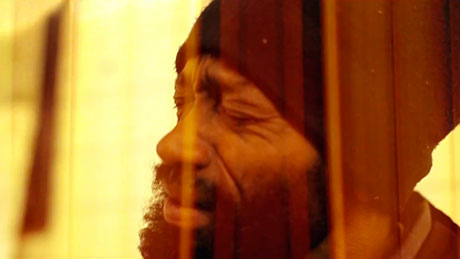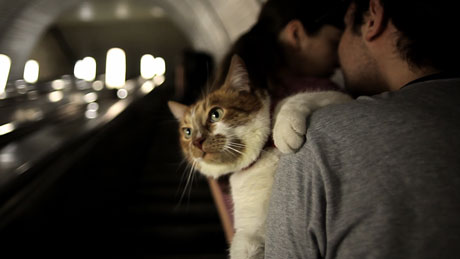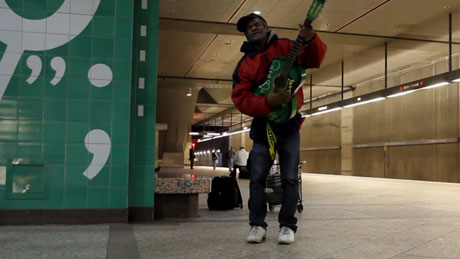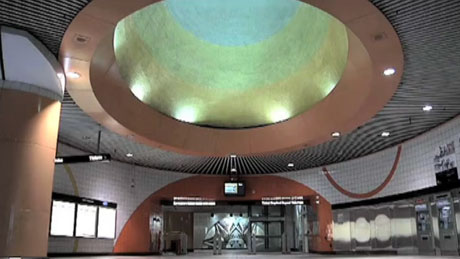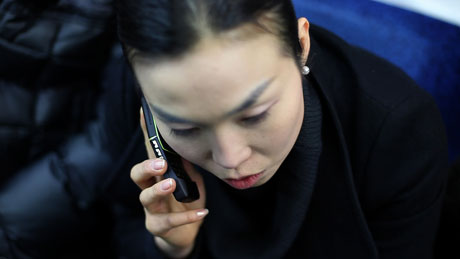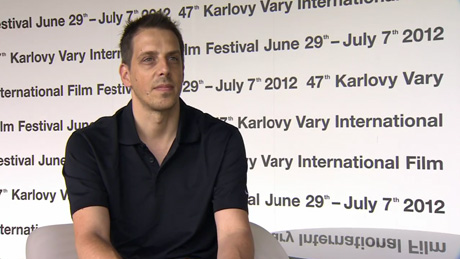Sample Tracks:
Official Music Video of
Trains of Thoughts
Edit: Gerald Schober (0'-2') & Jakob Barth (2'-4')
Published on 12 Nov 2012
upcoming screenings and events
Overview of festivals and events showing «Trains of Thoughts»
TO BE ANNOUNCED SOON
6th of March 2015
«TRAINS OF THOUGHTS» LIVE
at Luxemburg Filmfestival
Luxemburg
featuring Markus Kienzl, Wolfgang Frisch & Timo Novotny
15-29th of Jan 2015
Ukraine Film Release
at KIEV
Kino Kiew 19:00 and Red Hall 13:00/16:00/18:20 Kiev / Ukraine
27th of June 2014
MQ presents «TRAINS OF THOUGHTS» LIVE
at Museums Quarter
Vienna / Austria
featuring Markus Kienzl, Wolfgang Frisch & Timo Novotny
23-29th of June 2014
Sheffield Design Week
at Sheffield
Sheffield / United Kingdom
20th of June 2014
United Island presents «TRAINS OF THOUGHTS» LIVE
at United Island Festival
Prague / Czech Republic
featuring Markus Kienzl, Wolfgang Frisch & Timo Novotny
27th of April 2014
Video Les Beaux Jours
at Strasbourg
Strasbourg / France
24th-27th of April 2014
IFF and Urbanism “86”
at Slavutych
Slavutych / Ukraine
19th of April 2014
Art Musuem Estonia
at Tallin
Tallin / Estonia
7th-17th of April 2014
Festical Of Eastern and Central Film
at Lima / Peru
Lima / Peru
4th of April 2014
Doc Lounge
at Mamoe
Malmoe / Sweden
16th of March 2014
Carnegie Hall presents «TRAINS OF THOUGHTS» LIVE
at Austrian Cultural Forum New York / USA
11 East 52nd Street / Manhattan / New York City
featuring Markus Kienzl, Wolfgang Frisch & Timo Novotny
16th of January 2014
«TRAINS OF THOUGHTS» LIVE
at Eurosonic Noorderslag 2014, Groeningen / NL
11:45pm - Grand Theater
featuring Markus Kienzl, Wolfgang Frisch & Timo Novotny
8th of December 2013
«TRAINS OF THOUGHTS» LIVE
at the 8th Zubroffka International Film Festival, Bialystok / PL
8pm - Closing Ceremony
featuring Markus Kienzl, Wolfgang Frisch & Timo Novotny
Read more
27th of November 2013
«TRAINS OF THOUGHTS» at the 10th SoundTrack_Cologne, Cologne / DE
9pm - Competition
1st of September 2013
Vukovar / HR
«TRAINS OF THOUGHTS» documentary competition at the 7th Vukovar film festival, Croatia
Read more
4th of October 2013
«TRAINS OF THOUGHTS» LIVE at Waves Vienna (wavesvienna.com)
featuring Markus Kienzl, Wolfgang Frisch & Timo Novotny
6th - 20th of June 2013
San Francisco
Screening of «TRAINS OF THOUGHTS»
08.06.2013, 5:00pm - Balboa Theater
15.06.2013, 5:00pm - Roxie Theater
19.06.2013, 5:00pm - Roxie Theater
5th of June 2013
«TRAINS OF THOUGHTS» LIVE in Cluj
at TIFF – Transilvania International Film Festival, Romania
featuring Timo Novotny, Wolfgang Frisch and Markus Kienzl
28th of May - 2nd of June 2013
Docs Barcelona
Screening of «TRAINS OF THOUGHTS»
30.05.2013, 6:15pm - Cinemes Renoir Floridablanca
31.05.2013, 10:15pm - Cinemes Renoir Floridablanca
02.06.2013, 6:15 - Cinemes Renoir Floridablanca
10th - 19th of May 2013
Planete+ Doc Film Festival Warsaw
Screening times with Q&A of the director:
10.05.2013, 6:30pm, Iluzjon Stolica
11.05.2013, 8:00pm, Iluzjon Mała
14th of May 2013
MAK NITE presents «TRAINS OF THOUGHTS» LIVE
Austrian Premiere featuring Markus Kienzl, Wolfgang Frisch & Timo Novotny
MAK - Austrian Museum of Applied Arts / Contemporary Art / Vienna / A
9th of May 2013
«TRAINS OF THOUGHTS» LIVE in Warsaw
featuring Timo Novotny, Wolfgang Frisch and Markus Kienzl
9:00pm - Cinema Iluzjon, Warsaw / PL
7th of May 2013
Screening of «TRAINS OF THOUGHTS» & «LIFE IN LOOPS»
with Q&A from the director
Double Screening at Leo Kino / A
7:00pm & 9:00pm / Leo Kino - Tirol / A
3rd - 11th of May 2013
Docville Belgium / BE
09.05.2013 (5:00pm) & 10.05.2013 (10:15pm) - Screening of «TRAINS OF THOUGHTS»
Read more
11th - 18th of April 2013
Praha Eurodok / CZ
16.04.2013 - Screening of «TRAINS OF THOUGHTS»
Read more
24th of March 2013
«TRAINS OF THOUGHTS» LIVE in Budapest
featuring Timo Novotny, Wolfgang Frisch and Markus Kienzl
9:00pm - Toldi Cinema, Budapest / HU
14th - 28th of March 2013
Screenings of «TRAINS OF THOUGHTS»
18th Vilnius International Film Festival / LT
14.03.2013, 9:30pm - Hall 7 (Forum Cinemas Vingis)
18.03.2013, 3:15pm - Hall 7 (Forum Cinemas Vingis)
20.03.2013, 3:30pm - Hall 7 (Forum Cinemas Vingis)
22.03.2013, 5:30pm - Hall 5 (Forum Cinemas Vingis)
24.03.2013, 7:15pm - Hall 7 (Forum Cinemas Vingis)
26.03.2013, 3:00pm - Hall 7 (Forum Cinemas Vingis)
Read more
13th - 17th of March 2013
Screenings of «TRAINS OF THOUGHTS»
Eurodok Norway / NO
15.03.2013, 9:00pm
17.03.2013, 6:15pm
7th - 17th of March 2013
Documentary Competition
17th Sofia International Film Festival / BG
Sofia / BG
14.03.2013, 8:30pm - Red House (with Q&A of the Director)
18.03.2013, 4:30pm – Lumiere
Read more
2nd and 3rd of March 2013
Screenings of «TRAINS OF THOUGHTS» in the subwaystation
5th Budapest Architecture Film Days / HU
11:00 / Fővám square, south bridgehead in the subwaystation / Budapest / HU
Read more
7th of Dezember 2012
Austrian cinema release of «TRAINS OF THOUGHTS»
Vienna, Graz, Linz / A
Gartenbaukino (Vienna), KIZ Royal (Graz), Moviemento (Linz) / A
6th of Dezember 2012
Austrian PREMIERE of «TRAINS OF THOUGHTS»
+ PREMIERE PARTY (Free Entrance)
DJ SOFASURFERS (Michael Holzgruber & Wolfgang Schlögl)
This human world Festival / Vienna / A
8pm / Gartenbaukino / Vienna / A
23rd of November 2012
Screening of «TRAINS OF THOUGHTS»
IDFA - International Documentary Filmfestival Amsterdam / NED
5:30pm / Eye Cinema 1 / Amsterdam / NED
20th of November 2012
Screening of «TRAINS OF THOUGHTS»
IDFA - International Documentary Filmfestival Amsterdam / NED
1:30pm / Tuschinski 5 / Amsterdam / NED
18th of November 2012
Screening of «TRAINS OF THOUGHTS»
IDFA - International Documentary Filmfestival Amsterdam / NED
10:30pm / Munt 13 / Amsterdam / NED
14th of November 2012
Screening of «TRAINS OF THOUGHTS»
IDFA - International Documentary Filmfestival Amsterdam / NED
7:15pm / Munt 09 / Amsterdam / NED
10th of November 2012
Screening of «TRAINS OF THOUGHTS»
CPH:DOX - Copenhagen International Documentary Film Festival / DEN
9:30pm / Palads Biograferne / Copenhagen / DEN
7th of November 2012
Screening of «TRAINS OF THOUGHTS»
CPH:DOX - Copenhagen International Documentary Film Festival / DEN
6:00pm / Metro: Kgs. Nytorv / Copenhagen / DEN
4th of November 2012
Screening of «TRAINS OF THOUGHTS»
CPH:DOX - Copenhagen International Documentary Film Festival / DEN
10:00pm / Gloria / Copenhagen / DEN
26th of October 2012
Australian Premiere of «TRAINS OF THOUGHTS»
Cockatoo Island IFF / AUS
8:15pm / Hoyts Kiosk Cinema / Cockatoo Island / AUS
15th of October 2012
Screening of «TRAINS OF THOUGHTS»
Zagreb Film Festival / CRO
10:00am & 8:00pm / GRIČ CINEMA / Zagreb / CRO
16th of October 2012
Screening of «TRAINS OF THOUGHTS»
Zagreb Film Festival / CRO
9:30pm / DOKUKINO KIC / Zagreb / CRO
28th of August 2012
LIVE PREMIERE at the Opening of the AUSTRIAN PAVILION
13th International Architecture Exhibition of the La Biennale di Venezia 2012 / ITA
Austrian Pavilion / Giardini della Biennale / Venice / ITA
10th of July 2012
Balkan Premiere of «TRAINS OF THOUGHTS»
Sarajevo International Film Festival / BIH
8:30pm / Cinema City Hall 1 / Sarajevo / BIH
9th of July 2012
Balkan Premiere Party
PREMIER NIGHT PARTY WITH DJ TIMO NOVOTNY (SOFA SURFERS) & DJ VLADO DZIHAN (COUCHRECORDS)
11:00pm - 1:00am / Lasko Summer Nights / Sarajevo / BIH
4th of July 2012
2nd Screening of «TRAINS OF THOUGHTS»
Karlovy Vary International Film Festival / CZE
1:00pm / Drahomira Cinema / Karlovy Vary / CZE
3rd of July 2012
Premier Night Party
Premier Night Party with Sofa Surfers (Markus Kienzl, Wolfgang Frisch, Michael Holzgruber, Timo Novotny) & Jakob Barth (kontext)
11:00pm - 5:00am / Aeroport Karlovy Vary / CZE
3rd of July 2012
World Premiere of «TRAINS OF THOUGHTS»
Karlovy Vary International Film Festival / CZE
6:30pm / Cas Cinema / Karlovy Vary / CZE
past screenings and events
Archive of festivals and events
«Trains of Thoughts» will also be available
as a special audiovisual live remix show.
Markus Kienzl is the man responsible for bass and programming in the Surfers camp. On his solo works he delivers smoked-out dark, crisp beats and mutated funk gems straight of Electro-Dub-Film-Noir-Jazz.
Wolfgang Frisch also responsible for programming and production in the Sofa Surfers universe recently finished his second album "Watering the Land", a melt down of singer song writer and electronic music will join with guitar and bass.
Timo Novotny, the visual mastermind of the Sofa Surfers will scratch cinematic images as a DJ his Vinyls.
Markus Kienzl, Wolfgang Frisch & Timo Novotny will take you through New York, Los Angeles, Moscow, Vienna, Tokyo & Hongkong, unleashing the imagination at every destination with its distinctive palette of visuals and selection of sounds from Sofa Surfers.
The world-premiere of Trains of Thoughts LIVE is at the 28th of August at the Opening of the AUSTRIAN PAVILION at the 13th International Architecture Exhibition of the La Biennale di Venezia 2012
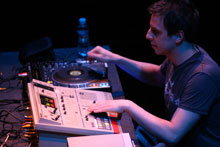
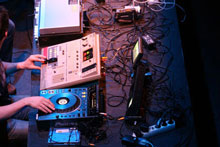
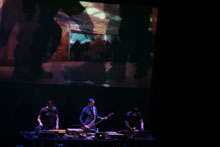
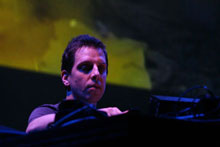
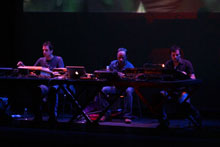
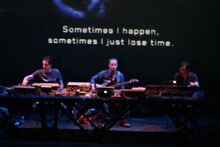
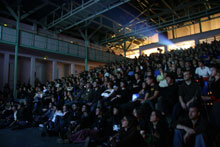
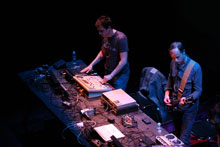
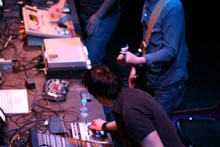
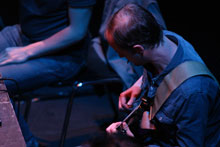
Photos by: zemos98
TEAM
Crew members of
«Trains of Thoughts»
Director: Timo Novotny
ASSISTANT DIRECTOR: Jakob Barth
PRODUCTION MANAGER: Katica De Pascale
PRODUCTION: Ulrich Gehmacher (Orbrock Productions)
CO-PRODUCTION: inLoops
CAMERA: Timo Novotny, Jakob Barth, Katica De Pascale, Simone Laimer, Michael Reiter
STEADY CAM OPERATOR VIENNA: Enzo Brandner
FOCUS PULLER VIENNA: Dieter Knestel
EDIT: Timo Novotny, Jakob Barth, Georg Scherlin, Martin Kaindl, Claudia Tschabuschnig, Armin Herzog, Gerald Schober
MUSIC: Sofa Surfers
NEW YORK CREW: Melanie Maar, Josh Deeter
LOS ANGELES CREW: Hines Buchanan, Marjam Oskoui
HONG KONG CREW: Dorothy Cheung, Yan Jocelyn Yu Lok Ning, Zoe Phang Shuk Yee, Joey KyLi, Lo Yin Yu, Kenneth Li Ka Nok, Cecilia Cheung, He Shan, Jin Wong, Kylie Chan, Nathalie Gilbert, Li Ka Yee Joey, Mani Goel, Oliver Thompson
TOKYO CREW: Hiroyuki Nagatake, Kaori Mochizuki
MOSCOW CREW: Nina Zakharova, Jaroslava Evseeva, Olga Shaldova, Valeria Vinogradova, Julia Kulagina
VIENNA CREW: Bernd Schulz
RESEARCH: Maria Otter
TRANSLATION: Kaori Mochizuki (Japanese), Johnny Lam & Sin-Ting Chow (Cantonese), Katica De Pascale (Italian), Alexander Babaev, Ruslana Berndl (Russian)
LOCATION SOUND RECORDING VIENNA: Franz Moritz
LOCATION SOUND RECORDING N.Y.: Oliver Brunnbauer
LOCATION SOUND RECORDING L.A.: Martin Siewert
SOUNDDESIGN/PRE-MIX: Markus Kienzl
SOUND POST PRODUCTION: Blautöne
ASSISTANT SOUND EDITORS: Bernd Dormayer, David Rubin, Jakob Studnicka
DIALOGUE EDITOR: Klaus Gartner
MIXING CONSULTANT: Thomas Kathriner
SOUNDDESIGN/RE-RECORDING MIX: Michael Ploederl
ONLINE: Seven Productions
COORDINATOR: Alexander Reindl
COMPOSITING: Ebo Rose
COLORS: Pablo Sastre
FONT DESIGN: Nik Thoenen
WEB: Claudio De Pascale, Michael Holzgruber
AUSTRIAN EMBASSIES & CULTURAL FORUMS (New York): Maria Simma, Christa Marchardt, Andreas Stadler
AUSTRIAN EMBASSIES & CULTURAL FORUMS (Moscow): Christina Telic, Simon Mraz
AUSTRIAN EMBASSIES & CULTURAL FORUMS (Tokyo): Michael Haider, Akiko Soga
AUSTRIAN EMBASSIES & CULTURAL FORUMS (Los Angeles):Alberteen Anderson, Martin Weiss
AUSTRIAN EMBASSIES & CULTURAL FORUMS (Hong Kong): Michael Kratzer
WIENER LINIEN: Bernd Sobotka, Anton Infuehr, Angelika Drazdal
HONG KONG MTR: Jane Wong
LOS ANGELES METRO: Herman Hagan
TECHNICAL SUPPORT: Tools at Work
LIVE PERFORMANCE SUPPORT: Departure
Special Thanks: Wolfgang Frisch, Wolfgang Schlögl, Martin Lorenz, Katharina Pretl, Yoshiyuki Komatsu, KalaLea, Dylan Stanfield, Verena Kurz, Richie Williamson, Dean Janoff, Csaba Gyönös, Olga Krylova, Anna Stepanova, Yana Bille, Verena Panholzer, Ina Jasni, Karl Novotny, Elfriede Novotny, Florian Gehmacher, Sieglinde Herzog, Elena Rodina, Titus Nemeth, Dariusz Kowalski, Manfred Pech, Domi Cheung, Georg Tomandl (Sunshine Mastering), Tue Steen Müller, Nanse Kawashima, Michal Mart, Daniel Hollerweger, Yuriya Kon, Berenice Kuntner, Han Suites Seoul, Kenji Herbert, Paolo Tomaselli, Marta Topferova, George O ́ Connor, Ayal Tsubery, Awa Kamara, Alina Iordache, Adrienna Lewenhaupt, Esther Lorenz, Chanda Rule, Charles Coleman, Chris Hills, Gene Pritsker, Dimitrije Vase, Nancy Goudin, Kim Kalesti, Marlene Rutzendorfer, Georgij Alexandrowitsch Makazaria, John Rich, Freedom Figueroa, Junior Soto, Ronal Green, Robert Gordon, Alvaro Kapaz, Peter Janecek, Ralph Wieser & Mischief Films , Hana Rezková, Ex Oriente & IDF
Interviews (New York): Michael Gentle, Peter Jacobs, Kelly Hoffman, Rosemarie Weppler, Michelle Enemark, Fred Cis- terna, Patrick Billard, Robert Saini, Staley Grant, Lara Sweeney, Francisco Lema, Nathan Peck, Tat Ho, Orisis Watl, Gregory T. Infanti, Lauren Weinstein, Sam Beebe, Will Anderson, Robert J. MC. Arthur, Edward Schnell, James E.Ratte III, Valerie Matron, Annie Wagner, Andro Salvatierre, Laura Mazza, Boris Izrayelty, Turel Stoulm, Rachel Kerry, Kristin Stokes, Traey Tsutsumoto, Ivwe Olise, Karli Provost, Philip Saxton, Daniel Noohan, An- drew Breving, Megan Nordin, Andy T. Simon, Chris Desanty, Patrick Southern, Jennifer Corrales, Nicola Trezzi, Harris Klahr, Ian Kerr, Juline Koken, Andrew Spaulding, Jonathan Ramirez, Scott Rogowsky, Sara Deane, Tj Stein, Keith Locantore, Dallis Newman, Donny Hodge, Jesse Carpenter, Nickolas Roudane ́, Claire Cuno, Gen- esis Garcia, Chris Jones, Brian Keating, Caitilin Warbelow, Bobby Miller, Shane Connelly, David Gettens,Henry NG., Gabriela, Robert Gabelmann, Bruce Brurh, Paul Glenn, Seth Magee, Jason Medina, Stephenj Remington, Craig Watson, Mason Phillips, Julie B.Thomson, Giuseppe Hammer, Colin O.Carrol, Reneè Peperone, Miranda Cahpman, June Tatascio, Kate Wheeler, Michael Lee, Harlan Erskine, Amy Yakuboff, Noelle Griffis, Bérnard- Marie Mendes France, Jenny Carrow, Jennifer Devore, Jessica Klein, Sarah Bedford, Andreea Mincic, Sarah Bing, Charles U.Farley, Grant Zubritsky, Michael Monahan, Rick Snell, Steve Hindy, James Jager, Jane Ortrun Carver, Marc Merza, Mark Nicol, David De La Cruz, Billy Downing, Andrea Sicco, Laura Van Schendel, Rachel Day, Robert Schreiner, Kelly Barrick, Jonah Stern, Dre Block, Lobanov Sergey, Carey W. Gabay, Noelle Troc- coli, Keith Abbott, Thomas Egan, Igor Hadzismajlovic, Davey Mass, Francisco Rodriguez, Duncan Arundel, Carey Mann, Denise Finkley, Romario Ferrer, Zarely Castro, Anthony Ramos, Kevin Bennett, Michel Beers, Garett Kramer, Adam Ahuja, Darnell Robinson, Fernando Lopez, Todd Zinn, Jared Chavsow, Juan Carlos W., Quan Flood, Dale Griffin, David Ahl, John Stansfield, Jaek Sulikowsky, Murray Stall, Jeffrey Lee, Assibey Blake, Pascal Perich, Jaclyn Brown, Carl Pnss, Natalia Paruz, George Venson, Jin Ooi, Futaba Sunderland, Cynthia Liang, Peter Flaiterry, Aaron Goldsmith, June Muris, Edwin De Jesus, Mike Alaska, William Anderson, Aaron Somers, Donald Green, Bryan Waelsh, Shakir Speller, Laura Citron and Mary Czech, Ryon Cox, Benjamin Moskowitz, Iwona Drapala, Daniel May, Alice Shahan, Yuriy Rudenko, Anna Azrieli, Dave Gonzales, Chris- topher Saunders, Sarah Williams, Vincent Arizmendi, Valeria Villariam, Andrew Foster, Ben Flanner, Henry Gonzalez, Daniel Varney, Thomas Joseph Gibbons, Ashley Levine, Steven Andrade, Meljnie Ciemmons and Kayla Croft, Kimesha Cave, Alex Kulesh and Anastasia Volkova, Paula Bryant, Ryan Beato and James Geddie, Calebe Arryda, L. Evans Mills ...
Interviews (Los Angeles): Matthew Gallegos, Daphne Knox, Calvin Fems, Frank, Akanni Safo, Micheal A. Little, Joe Costanzo, Kino Efretei, Jordan Drew, Obianozie Dillibe, Alan Thaddieus, Omar Dawleins, Kage Mugler, Zypher Williams. Jose Peinado ...
Interviews (Moscow): hiptsy Andrey, Taranenko Wacheslav, Vovonstsova Lieliya, Tsvetkova Mamica, Nikitina Ekaterina, Belyaeva Maria, Lesian Reisovna, Viktor Espling, Ludwig Thelin, Knyazeva Galina, Esenkina Nadezhda, Nikita Kaveshnikov, Galina Sitnichenko, Tauena Tpuropeobna, Vatschenko Irina Vladimirova, Burmistrova Svetlana, Marina Condolucci, Belitov Kirill Viktorovich, Chebotaryov Dmitrii, Shepetun S. A. , Mikhalyova Svetlana Vital’Evna, Romenskaja Elena Vuadimirova., Barsukova Dian, Davletova Zalina, Jakovlev Dimitriy, Nikolaeva Tatiana, Nagozuykh Polina, Gusev Nikita, Ksenija Vojevoda, Olga Kozlova, Matevosyan Anna, Mazyasova Tanya, Lebev Anton, Denis Sulimon, Obuhov Dmitry, Teshabaeva Yulduz, Pomanankova Lubov, Mirnov Egor, Chernyavskya Kristina, Nikolaev Sergey, Raspopov Radiov, Mrzov Georgy ...
Interview with Timo Novotny
at KARLOVY VARY INTERNATIONAL FILM FESTIVAL / CZE
Published on youtube.com (06.07.2012)
Article on filmkommentaren.dk
by Tue Steen Müller
Published on filmkommentaren.dk
After the original, masterly done "Life in Loops", the remix of Michael Glawogger’s "Megacities", accompanied by music by the Sofa Surfers, Austrian Timo Novotny has gone underground to investigate the magic of the subways and metros of – again – megacities like New York, Los Angeles, Tokyo, Hongkong and Moscow with Vienna as the starting point and a place the director returns to.
CLICK TO READ THE WHOLE ARTICLE
Again he has brought the Sofa Surfers with him and again he delivers an extravagant visual journey, a reflection on a space that millions of people daily occupy to be transported, for some an escape from the upper world, for others a space full of stories connected to its travellers. Novotny is an aesthete and his fascination of lines and forms is brilliantly conveyed through the montage of images, words and the music of the Sofa Surfers. Music that flows the whole way through and is synergetic with the image in pulse and rythm, contrary to the mainstream use of music in documentaries today, where the music is poured on like sugar to hide lack of energy in the sequences.
He starts his journey in the New York Subway, a place we know from many other films, homeless people are here, a micro-world it is, that shows – as one of the people we do not see but hear, say – that New York belongs to noone = everyone. You lose the feeling of time and space, you get overwhelmed by ”how many stories that are going on here”, ”I found a boyfriend in the subway”, you go by subway ”to be for yourself”. In this first chapter that also includes a brief hip hop performance in a train, there are many words outside the image, too many for my taste, some are a bit naïve and banal. On the other hand one of the peaks of the film comes when the black, bearded poet recites one of his poems, accompanied by the music and a magnificent montage that ressembles the opening sequences of ”Life in Loops”.
In the next chapter, in Los Angeles, close to Hollywood, the metro looks like a film set. Breaking all rules of normal documentary storytelling, Novotny here places a man on the platform and to him comes people to talk a bit, small stories, faces, and a rap performance that the director takes as an invitation to ”go bananas” with the editing... In between the chapters a man with a camera (the director´s alter ego?) takes photos where he is not allowed to be, walking along the rails.
Tokyo, where the train is always on time and where staff on the platform pushes the last one into the train carriage, for women often to be sexually harrassed, says one of the people, we do not see but hear. The solution for telling the story is in this case to follow one person, whose thoughts circle around death and suicide. Again Novotny takes stylistical elements from all shelves – slow motion, stop motion animation, whatever suits the sequence. Everything in the editing is controlled but within the controlled space, small music videos, you could call it, emerge and stand out.
From Hongkong to Moscow, where the audience is invited to follow a group of Italian tourists in the metropole’s beautiful underground, a strong contrast to the anonymous ”efficient” transporter in Hongkong, a metro with a soul, spiritual as it is, stressed by the Sofa Surfers introduction of the sound of bells in their musical score.
There is a flow in this film, a very intense one with stops on the way, with faces within the lines and the forms of the tracks and the movements, with light and shadow, and with sometimes incredibly beautiful sequences. With a, in a positive sense, aggressive approach to its subject.
Thank you Novotny, for not having chosen the Parisian metro, where it is not an experience, but a torture to walk and walk from one station to the other (did you try that with Les Halles?) but next time in Copenhagen I will pick you up in the airport and bring you to sit with me at the front of the driver loose wagon. It is fascinating like it is to watch your new work.
The film premiered at the Karlovy Vary International Film Festival beginning of July, went to Sarajeo Intl. Film Festival and is to have its live premiere in Venice at the opening of the Austrian Pavilion of the Architecture Biennale late August.
Description by
Sarajevo International Film Festival / BIH
Written by Rada Sesic
This impressive cinematic essay takes us on a journey through the subway systems of several megacities around the world.
It emanates a strong feeling of both loneliness and togetherness. Visual artist Timo Novotny establishes a specific mood, successfully balancing profoundly composed images with a very sophisticated soundtrack with music composed and performed by the Sofa Surfers collective with whom film maker also performs.
Description by
KARLOVY VARY INTERNATIONAL FILM FESTIVAL / CZE
Published on kviff.com
For the majority of people, the subway merely represents a reliable means of transportation that quickly and safely transports them to their destination.
Timo Novotny’s audiovisual essay, however, reveals that the underground railway is much more. It is quite literally the seedbed of a wide variety of human stories (New York), a center of diverse musical production (Los Angeles), a favored locale of suicide and sexual deviance (Tokyo), a glitzy tourist attraction (Moscow), or an ideal place for study or relaxation. Set to the excellent, uninterrupted soundtrack by Sofa Surfers (rightfully dubbed the Austrian Massive Attack), the filmmakers accompany us through the underground railways of several world metropolises, discovering what makes them unique. Sometimes visually reminiscent of a classy music video, this whimsical movie stands out for its original visual treatment and effective interplay of music and image.
Interview with Timo Novotny
by Karin Schiefer
(Austrian Film Comission)
Published on afc.at
Urbanity just fascinates me, and my images focus on architecture. I have more affinity to architecture than people. In documentary film in particular I consider the city to be the most interesting location of all. Timo Novotny talks about his Trains of Thoughts.
CLICK TO READ THE WHOLE INTERVIEW
The time spent on the subway is down time or "wasted time," an opportunity to let your mind drift or philosophize, and at the same time the subway represents better than anything else everyday life, the banality you need every day. Did you look for your approach somewhere between the means of transportation and the metaphor for the dark, mysterious zones of the city and in people?
What really led me to this project is architecture. When I get home after walking through a city and look at the pictures on my camera, there are about a hundred of the subway and just one of the city. Prague’s subway was a great inspiration in this sense. In New York’s subway people are really in their own worlds, and not knowing where you are or where you’re going has both advantages and disadvantages. Some people say that it’s the most important part of the day, because no one can reach them. Though they’re in this tin can with millions of other people, it’s really time they use for themselves and look forward to a little. In general, it’s the same as putting mice in labyrinths and seeing whether they’ve changed after a century, when the labyrinths are constructed differently. The subway also reflects the city and explains why the people in Tokyo are the way they are, and why New York is the way it is. What’s always been important to me is capturing the music and urban activities that move us. I didn’t want to make a philosophical film that was fraught with meaning, that isn’t my thing. On the other hand, I didn’t want to just examine the banal aspect of everyday transportation either. Getting on and getting off alone wouldn’t be enough. The important thing is maintaining a buildup of tension and portraying individual cities. That’s why this movement from East to West was extremely important, we move westward the entire time. There are a few stops in Vienna in between that take us away from the stress and tell us how the subway can also be something quiet and lyrical.
Have your travels inspired you to observe subways more closely?
In particular it was a trip to Prague and one to Munich where I had an extremely powerful experience of architecture. Of course, while touring with the Sofa Surfers and traveling for film shoots I’ve always felt an affinity for subways. I’m fascinated by train travel and this uncertainty you feel while traveling underground. There’s part of a line in Florence where the subway crosses a hill. The train makes a 360° loop to work up enough speed to make it over. This loop isn’t on the map, and every day you take a kind of roller-coaster ride without noticing it. I think that’s amusing. My intention wasn’t to sing the praises of the subway, but I like the fact that it’s also bound up with emotions, such as with the Russians, who are so proud of the Moscow subway.
Is the subway the symbol of urbanity in your opinion?
For a European, yes. In my opinion, that’s the most obvious in LA. There, the subway plays a purely symbolic role, it gives the city the impression of an urban character. Most Angelinos aren’t even aware that the city has a subway, but for us Europeans a subway is indicative of urbanity. On the other hand, a small city like Hannover has a subway to take visitors from the airport to the Cebit trade fair or the old city center, which makes people think they’re covering vast distances. You could cover the same amount of ground by bicycle or on foot, but it creates the impression that Hannover is a cosmopolitan city. There’s something about the subway that turns a space into a city.
How did you choose the cities?
The are 160 subway systems around the world. Of course, the most honest thing to do would be making 160 documentaries, in my case the premise was to make cinema and this world tangible by means of cinematic images. That’s why I had to make choices. The fact that Paris, London, Buenos Aires and Mexico City aren’t included is definitely a shortcoming. Unfortunately, you have to limit yourself, and I think there’s something emblematic about New York, its subway is the oldest in America. The great thing about it is that nothing works, sometimes people just get stuck and then have to get out in the middle of a tunnel and walk to the next station, and they start talking to each other as a result. Then you go to LA, this anti-city. For me, LA is the embodiment of an anti-city, and it’s familiar to everyone thanks to Hollywood. I had fun shooting underground there, at places that have rarely been filmed in the past. After LA the obvious thing, of course, was to continue on to Latin America, but I wanted to continue on westward. Capitalism and how it has come out on top in Tokyo represents the future for me. Tokyo is where the sun rises, and where it’s possible that people already function in a future form. I can imagine that some day we’ll all be like the people in Tokyo are now. I saw a society there that’s dominated by work, not-looking, rules and order. I think our societies are moving in that direction, that something’s eating into them, and at some point everybody will be messed up inside, even though everything apparently still works. The film continues westward, from the middle course between capitalism and communism?Hong Kong?to old-school communism in Moscow. The basic idea was analyzing social systems and creating varieties. We begin in Vienna and end up in Vienna, though the return to Europe is at the conclusion, in Moscow. There are intermediate scenes set in Vienna, and they’re intended to have a calming effect and create a bridge to the next city.
In these intermediate sequences in Vienna there’s a photographer who guides us through the tunnels, and he in a way resembles a shepherd taking us into the dark underworld. Is he also your alter ego?
I wanted to show someone who’s a kind of guerilla photographer or who could be a kind of alter ego of mine. That was also a way to show the subway as a location that can be used in alternate ways, some possibly illegal, walking through the tunnels and finding peace, a balance in one’s life there. During shooting I learned that Vienna’s subway system is a stronghold of graffiti artists. There’s really a kind of sprayer tourism here, because you can get into the tunnels and out again fast. Showing the graffiti didn’t really interest me, I wanted to have a photographer because that fascinated me more, that someone wants to go down there to find peace and to take in and illuminate the space.
The subway is a system where everything runs "on rails" and is controlled, where safety plays an important role, and at the same time one of your interviewees claims that for him the subway is a place where you lose all orientation in time and space. Do you consider the subway a place with a number of contradictions?
Yes, definitely. In all five cities we stay in the range of the legal and controllable. With a photographer in Vienna’s subway tunnels you might have the only moments of tension in the film because someone sets off on paths that people aren’t normally allowed to set foot on?he takes a completely different path, and that’s possible in each city. This buildup of tension does a little more to illustrate my thinking.
Can you briefly describe the five cities?
When you start in New York, the interesting thing is that that city makes you feel that anything’s possible there, though it’s an isolated world. I like the fact that the place is also used in a way that wasn’t originally intended, that artists perform there. I think it’s great that it sometimes gets stuck. Anything’s possible, and the people are extremely friendly when it happens, because they have to communicate. In New York you’re rarely confronted in an unfriendly way. In Vienna we had a problem right away, so I had to get out. In New York anything’s possible: Communication works without a hitch. On the other hand, the subway’s in pretty bad shape, it snows into it, and water runs down the walls. It represents the city and life there. The walls outside the system are just as thin as they are underground. When you’re down there, you can sense what things must be like above ground. In LA there’s some nice interplay with the camera. We chose someone who can talk to anybody, who knows the subway and uses it. In LA an incredible number of people never knew that there’s a subway. All the people there like to look into the camera, there’s a dialogue, a game with the camera, and it’s all about image, you can sense Hollywood. But at the same time it’s totally obvious in LA when someone doesn’t have a car and has to take the subway, they’re at the bottom of society.
In Tokyo a lot of things are explained, because it’s the most difficult system of all to understand. We have a figure we follow. One statement sums things up extremely well: The Japanese are so punctual because the trains are punctual. Our production manager showed up right on time every day, which didn’t happen in any other city. I thought it was so absurd when I found out that it’s considered polite when you’re pushed into an overcrowded train or that a family’s proud of their father who committed suicide. Everything’s double-edged there and difficult to understand, that’s why there’s an announcer. You’re always in motion in Tokyo. There are no performers in the subway, no standing still, just functioning, quietly, courteously, without a lot of fuss.
The subway in Hong Kong represents for me the totally absurd fact that the subway there isn’t publicly owned, it’s run by a private company. This company buys empty spaces, builds huge apartment buildings and the subway at the same time. As a result, completely insignificant empty land is suddenly turned into an expensive residential area. It can happen that you pay your rent to a company, use its subway and work at one of its shops. Sometimes they determine your entire life. Fortunately, we found some interviewees who have a critical view of this. This company’s expanding, and in my opinion it represents the pinnacle of capitalism. The company determines the city’s heartbeat completely, and control over the people is total. Moscow’s struggling with what’s left of communism. The people there told us with complete conviction that they have the most beautiful subway in the world, even though they’ve never seen any others. They’ve had it drilled into them long enough. Their national pride seemed extremely characteristic to me, and it’s expressed quite well through the subway. And the distances between the stations are endless in Moscow; once I made the mistake of getting out too soon on the edge of the city and then spent an hour and a half walking.
While doing research did you visit other cities that you ended up not shooting in?
Yes, I also went to Seoul, Paris and London. I wanted two Asian, two American and two European subways. Vienna and Moscow couldn’t be more different. The Asian subways are very similar in terms of design, though Tokyo and Hong Kong are extremely different as far as mentality’s concerned. If I were to be critical, I’d say that it’s too bad I didn’t include Buenos Aires or Mexico City, but LA, as an anti-city, was too important to me. I wanted not only urban cities, but this city too, which pretends to have a mass-transport system. I traveled around the world for three months doing research, then I filmed in New York for seven weeks, which was an exception, in most cases it was two weeks.
Is filming permitted in all subways?
In New York they interpret the law in an extremely ambiguous way. Filming is not permitted, but videography is. Whatever the difference may be. We had permits in the other cities. And when you’re so close to people, you have to ask for their permission to film them and get their signature.
How is it possible to shoot in the tight space of a subway?
In New York I wanted to talk to as many people as possible. In those cases we often asked right away if we could bring the camera along and left it up to the individual whether they slept, read, or just sat there. The New Yorkers were extremely open. In Tokyo and Hong Kong our approach was similar, though we sent two interpreters ahead with a camera, and then another two of us stayed in the background with a telephoto lens. When the interpreters thanked the interviewees and they relaxed, we were able to shoot that moment of relaxation with the telephoto lens. Those are often the most honest moments, because the awareness of being filmed always makes people a little less natural. So we found a solution that was legally OK and gave naturalness a chance.
The crew was always small; we needed interpreters, of course, but we weren’t allowed use tripods or lighting, and large cameras would scare off the subjects, so there were just a few of us. I was waiting for this Japanese single-lens reflex camera, I ordered one right away and then we could get started. This camera was a godsend, you hold it like a normal camera. Again and again we tried to pose as a couple of tourists to be as inconspicuous as possible. And I can understand that people feel that their privacy’s being invaded on subways. In New York especially, where, as I said, the subway ride is often the only time in the day when people can withdraw into themselves. In my opinion the film turned out to be extremely honest, it doesn’t have a single scene where I had to say, do that again, or where I had to tell someone where to stand. In Moscow we always made sure to stay out of the way.
Half the time I operated the camera myself, and the rest of the time I had several different camerapeople. During editing, the only important issue was how something fit together, how it could be turned into a film which does justice to the subway’s movement and rhythm and conveys a sense of the space.
Music represents an essential element in your work. Does every subway have its own sound and rhythm?
Yeah, I think so. Of course, the general atmosphere and smell can’t be ignored. I can’t really think about the sound by itself, in isolation from the other things, because the smell is such an important element in New York in particular. But I think that they all have sounds and speeds. In Moscow the trains generally move fast, and when you turn the volume on your iPod all the way up, you can barely hear the music. If you did that in Tokyo, it’d be incredibly irritating for the person sitting next to you. Talking on a telephone is also a huge no-no there. Tokyo’s ahead of other cities in that sense too. Speeds and sounds are extremely characteristic, and right away I always knew which of the Sofa Surfers I would have do the music for a certain city. I’ve worked with them for a while now and know them extremely well, which is how I knew who would be good for what task. I don’t make music with the Sofa Surfers myself, sometimes I put together pieces of the other loops, add voices or sounds, but I wouldn’t call myself a musician. I’m on stage with the band as a visualist only and do the videos and CD covers?everything that’s visual. At the same time I’m right there when the music is made, and since I put together so many live images, I’m very good at working with rhythm and visual material. That was extremely helpful for this film.
After Life in Loops, Trains of Thoughts is your second full-length film, and the focus of both is the city as a theme.
I saw Michael Glawogger’s Megacities at the Metrokino cinema when I was 25. It was the only Austrian film that hit me like a lightning bolt. I’m interested in cities in general. Although I like to spend my entire vacation at the beach, I generally like to be in cities exclusively the rest of the time. Urbanity just fascinates me, and my images focus on architecture. I have more affinity to architecture than people. The next project I’m planning, Vienna Was Moscow and Paris, is about a century of Vienna in film. I’ll be working in archives, and the film will be about Vienna’s image in film.
In documentary film in particular I think cities are the most interesting locations of all.
With all the off-camera voices reflecting on movement underground, would you call Trains of Thoughts an essay or a documentary?
I consider it a documentary, because it’s an extremely honest film, with the exception of the montage and music. In terms of the images everything’s real and puristic, as it should be in my opinion. On the other hand, of course, it’s a visual essay about the subway. I wanted the off-camera voices, they fit the idea I developed with my assistant director, Jakob Barth. For a long time it didn’t work, because we made the mistake of having too many shots of architecture with voices in the background. In the course of editing we finally figured out that the people sitting on the subway are necessary so you can hear the off-camera voice better. For a long time we tried to make a purely architectural film with a number of emotional and personal intellectual levels. I didn’t want to show the people, just hear and sense them. But it takes a lot of effort on the viewer’s part to see another place when you hear a train of thought and the picture fails to have the intended effect. In terms of the basic idea it was important that all the voices were off camera. And it was important to me that the approach was different for each city. In New York I wanted to have everything come from off camera, in LA there was the entertainer, in Moscow we had the tourist group. The intention was to vary it and make a European’s experience of the city approachable and tangible. In LA it was important to have someone who’s familiar with the city, because I was afraid down there, even if it wasn’t obvious. Being alone underground in LA was always an unpleasant experience. That’s a cliché that came true there. Heinz was born and grew up there, he was able to deal with these situations, and he wasn’t afraid of guns.
How did you come up with the title Trains of Thoughts?
That was after a long search, and then I found this nice double meaning of “train of thought.” The double plural isn’t correct in English, there are only trains of thought. I was thinking about the train and the tracks and a lot of other things, and I thought that they came together so well in this image. I read Marc Augé’s texts on non-places and the metro. I didn’t want it to become too philosophical and intellectual in its approach. Films should also be entertaining. I tried to find a middle course where you can feel the atmosphere without being bored with facts and statistics.
Synopsis of
«TRAINS OF THOUGHTS»
The train of thought, stream of thought or chain of thought refers to the interconnection in the sequence of ideas expressed during a connected discourse or thought, as well as to the sequence itself, especially in discussion how this sequence leads from one idea to another.
CLICK TO READ THE WHOLE SYNOPSIS
Trains of Thoughts is an audio-visual essay, which reflects upon and compares metro-systems around the world. It is an exploration of a world inside the world as well as the feelings – fascination, obsession, fear, and themes – of survival, control and silence – that revolve it.
The film will take you through New York, Los Angeles, Moscow, Vienna, Tokyo and Hongkong, unleashing the imagination at every destination with its distinctive palette of visuals and selection of sounds from Sofa Surfers. In each city, the audience will meet different kinds of characters and get acquainted with their relationships with metro-systems. The viewer will find that they are able to familiarize themselves with the characters and feel with them as the music complementing the scenes will be created from found sound and words originating from their respective locations. When interwoven into the music, these sounds will amplify the mood and atmosphere of the respective scenes.
Altogether, the film unveils several short stories about people who live with or for the metro. Their stories are staged against the backdrop of a strange juxtaposition of ambitious above-the-ground architecture and charming underworld.
Subway systems indicate that a city not only has a high population density but is also an agglomeration of cultures. It is an extremely vulnerable system that supports an expansive rhizomatic city. One could imagine this system of as a network of nerves, which when severed, could paralyze the workflow of an entire country/culture.!So many people rely on this convoluted network and cannot survive without it. However, most see the metro as a “means to an end”. Commuters board the train and with faith, allow themselves to be swallowed by a mechanical caterpillar at one point of the city and timely released at their selected destination. They hardly have any qualms about where exactly they are under and in which direction under the city they are going.
Visually, subway maps in train carriages are reduced to electrical circuit diagrams. As people stand and sit in the trains, they have no idea in which direction they are moving. They have to refer to points on the subway maps and later, the maps at the entrances of the stations to navigate themselves around the city.
The conversion of the topographical map into a topological diagram requires keeping to straight lines and limiting the choice of angles for the network by increments of 45 degrees.This creates an appearance of regularity and clockwork efficiency. As such, millions of people enter trains without any fear when going through dark tunnels. While the subway is a transient stop for millions of people, it is also a place to relax and a place for anonymity and freedom. It is a place to get lost, daydream and dream. Moving in this vein, with a mass of people in the same direction and without the need to recognise someone gives people a sense of togetherness and loneliness at the same time. The focus of this film will be on the world which reflects the surface world in so many ways, yet differs from it completely at the same time. Although the system is built by people, it in turn forms a nation and eventually defines its culture. There are so many subway systems used in equally various ways with completely diverse norms of behaviour. Example: the “anti-space” in Tokyo, with no artist or junkie compared to the “artist” – underground space in New York The structure of this film is shaped by many factors. You enter the system – you switch platforms – you get on a train – the program starts – you change lines on a platform – you change the channel. Always new stories, always new people.
press request & general contact
If you have any kind of press request or you just wish to get in contact please send an email to the following address:
film@trainsofthoughts.com
press pictures - Production stills
The material provides a basis for information purpose and as a recource for coverages.
The Usage for private and/or other purpose is prohibited.

press pictures - Print Quality
300 dpi / CMYK / .TIF / 32,7 MB
DOWNLOAD
press pictures - Screen Quality
72 dpi / RGB / .JPG / 8,6 MB
DOWNLOAD
press pictures - Timo Novotny
Portraits of the director of «Trains Of Thoughts».







